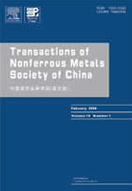Recovery of copper and cobalt from waste rock in Democratic Republic of Congo by gravity separation combined with flotation
(1. School of Minerals Processing and Bioengineering, Central South University, Changsha 410083, China;
2. Key Laboratory of Hunan Province for Clean and Efficient Utilization of Strategic Calcium-containing Mineral Resources, Central South University, Changsha 410083, China)
2. Key Laboratory of Hunan Province for Clean and Efficient Utilization of Strategic Calcium-containing Mineral Resources, Central South University, Changsha 410083, China)
Abstract: Copper and cobalt were recovered from SICOMINES mining waste rock in the Democratic Republic of Congo. The process mineralogy of the samples was analyzed using scanning electron microscopy and energy dispersive spectroscopy. The results showed that copper minerals exhibited various forms and uneven particle sizes, while cobalt existed in the form of highly dispersed asbolane, and large amounts of easily slimed gangue minerals were filled in the samples, making it difficult to separate copper and cobalt minerals. The particle size range plays a decisive role in selecting the separation method for the copper-cobalt ore. Gravity separation was suitable for particles ranging from 43 to 246 μm, while flotation was more effective for particles below 43 μm. After ore grinding and particle size classification, applying a combined gravity separation (shaking table)-flotation method yielded concentrated minerals with a copper recovery of 72.83% and a cobalt recovery of 31.13%.
Key words: copper-cobalt waste ore; process mineralogy; pre-classification; flotation; gravity separation

